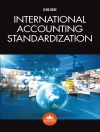To date, both internal and external corporate environmental reporting and management systems have focused on physical input-output measures. However, external stakeholders are increasingly demanding that organisations provide more financial information about the costs and benefits of their environmental actions. As environmental costs rise, internal decision-makers are also seeking such information to ensure that money is well spent. Beyond basic compliance, many companies will not countenance environmental actions for which a "business case" cannot be made. A number of companies – such as Baxter, BT, Xerox, Zeneca and others – are now beginning to develop a better understanding of the costs and benefits of environmental action. The US Environmental Protection Agency has also done considerable work on models designed to understand the "full costs" of pollution control investments, with the aim of demonstrating that – when these are properly considered – pollution prevention can be a more cost-effective alternative. The Green Bottom Line brings together much of the world’s leading research and best-practice case studies on the topic. Divided into four sections, covering "General Concepts", "Empirical Studies", "Case Studies" and "Implementation", the book includes case studies from the US EPA’s Environment Accounting Programme and contributions from authors at institutions including the IMD, INSEAD, Tellus Institute and the World Resources Institute. It constitutes a state-of-the-art collection.
Martin Bennett & Peter James
Green Bottom Line [PDF ebook]
Environmental Accounting for Management: Current Practice and Future Trends
Green Bottom Line [PDF ebook]
Environmental Accounting for Management: Current Practice and Future Trends
Köp den här e-boken och få 1 till GRATIS!
Språk Engelska ● Formatera PDF ● Sidor 432 ● ISBN 9781351283311 ● Redaktör Martin Bennett & Peter James ● Utgivare Taylor and Francis ● Publicerad 2017 ● Nedladdningsbara 3 gånger ● Valuta EUR ● ID 5319077 ● Kopieringsskydd Adobe DRM
Kräver en DRM-kapabel e-läsare












